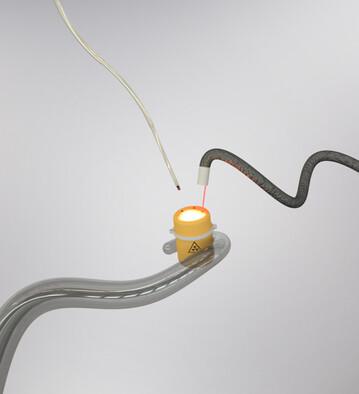当前位置:
X-MOL 学术
›
Adv. Intell. Syst.
›
论文详情
Our official English website, www.x-mol.net, welcomes your
feedback! (Note: you will need to create a separate account there.)
Continuum Robots: An Overview
Advanced Intelligent Systems ( IF 6.8 ) Pub Date : 2023-03-23 , DOI: 10.1002/aisy.202200367 Matteo Russo 1 , Seyed Mohammad Hadi Sadati 2 , Xin Dong 1 , Abdelkhalick Mohammad 1 , Ian D. Walker 3 , Christos Bergeles 2 , Kai Xu 4 , Dragos A. Axinte 1
Advanced Intelligent Systems ( IF 6.8 ) Pub Date : 2023-03-23 , DOI: 10.1002/aisy.202200367 Matteo Russo 1 , Seyed Mohammad Hadi Sadati 2 , Xin Dong 1 , Abdelkhalick Mohammad 1 , Ian D. Walker 3 , Christos Bergeles 2 , Kai Xu 4 , Dragos A. Axinte 1
Affiliation

|
Herein, recent advances, current limitations, and open challenges in the design, modeling, and control of continuum robots are discussed. Thanks to their lean bodies, these robots achieve a long reach through narrow and tortuous environments, enabling currently unachievable tasks for medical, industrial, and service applications. The recent surge in research on these robots leads to significant advances in design, modeling, and control methods. Herein, these developments with a comprehensive review of existing continuum robots and emerging technologies are examined. Then, modeling and control approaches are compared, and navigation strategies exclusive to continuum robots, such as follow the leader, coiling, and circumnutation are examined. Finally, an overview of their applications is provided with a focus on industrial and service tasks, outlining open research challenges and future developments.
中文翻译:

Continuum 机器人:概述
本文讨论了连续体机器人的设计、建模和控制方面的最新进展、当前局限性和开放挑战。凭借其精瘦的身体,这些机器人可以在狭窄和曲折的环境中实现远距离移动,为医疗、工业和服务应用实现目前无法完成的任务。最近对这些机器人的研究激增导致设计、建模和控制方法取得重大进展。在此,对这些发展进行了全面审查,并对现有连续体机器人和新兴技术进行了审查。然后,比较了建模和控制方法,并检查了连续体机器人独有的导航策略,例如跟随领导者、盘绕和绕行。最后,概述了它们的应用,重点是工业和服务任务,
更新日期:2023-03-23
中文翻译:

Continuum 机器人:概述
本文讨论了连续体机器人的设计、建模和控制方面的最新进展、当前局限性和开放挑战。凭借其精瘦的身体,这些机器人可以在狭窄和曲折的环境中实现远距离移动,为医疗、工业和服务应用实现目前无法完成的任务。最近对这些机器人的研究激增导致设计、建模和控制方法取得重大进展。在此,对这些发展进行了全面审查,并对现有连续体机器人和新兴技术进行了审查。然后,比较了建模和控制方法,并检查了连续体机器人独有的导航策略,例如跟随领导者、盘绕和绕行。最后,概述了它们的应用,重点是工业和服务任务,

















































 京公网安备 11010802027423号
京公网安备 11010802027423号